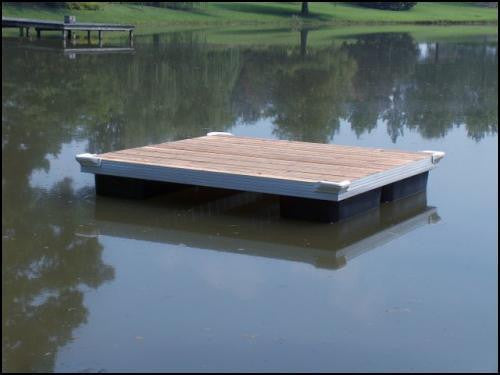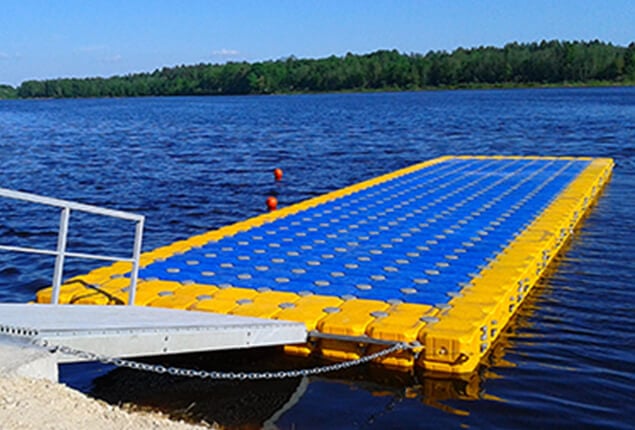Navigating the Options: Picking the Right Dock Company for Your Floating Dock Task
Navigating the Options: Picking the Right Dock Company for Your Floating Dock Task
Blog Article
Develop the Perfect Docking Service With Floating Docks
Floating docks present a functional remedy for a variety of maritime requirements, adapting perfectly to changing water levels and diverse vessel kinds. Their modular nature permits quick installment and moving, yet the choice of appropriate products and design features is important for guaranteeing both performance and aesthetic allure. As we discover the crucial aspects that add to the efficiency of floating docks, several key elements relating to stability and upkeep will arise, questioning concerning how to enhance your docking experience. The subsequent discussion will certainly brighten these essential factors to consider.

Advantages of Floating Docks
Floating docks deal numerous advantages that make them an ideal selection for numerous maritime applications. Among the main benefits is their flexibility to changing water levels. Unlike dealt with docks, floating docks fluctuate with the trend, making sure regular accessibility for vessels. This feature is particularly vital in locations vulnerable to significant tidal fluctuations or seasonal water level modifications.
In addition, floating docks are usually much easier and quicker to mount contrasted to traditional fixed structures. Their modular layout enables simple assembly and disassembly, promoting upkeep and relocation when required. This versatility is particularly valuable for short-term applications or in environments where problems may transform.
Floating docks additionally have a tendency to be more eco-friendly, as they minimize disruption to the seabed and bordering water communities. Their resilient nature decreases the danger of damage to marine life, promoting a healthier setting. These docks can be customized to suit numerous vessel dimensions, ensuring that they satisfy specific functional requirements.
Ultimately, the mix of versatility, convenience of installment, and ecological considerations makes floating docks a very reliable service for a vast array of maritime demands.
Picking the Right Products
Picking the appropriate products for floating docks is critical to ensure longevity, durability, and stability. The option of materials straight impacts the dock's efficiency in numerous ecological conditions, including direct exposure to water, sunshine, and potential wear from marine website traffic.
Usual products utilized for floating docks include light weight aluminum, timber, and high-density polyethylene (HDPE) Light weight aluminum is light-weight, corrosion-resistant, and requires marginal maintenance, making it an exceptional selection for longevity. However, its first cost can be greater contrasted to other materials.
Wood, while aesthetically appealing and giving a typical look, can be susceptible to rot and insect damage otherwise correctly dealt with. Using pressure-treated timber or naturally durable varieties like cedar or redwood can reduce these issues.
HDPE is a preferred option due to its resistance to UV rays and chemicals, in addition to being ecologically pleasant. floating dock builder. It is offered and light-weight in different colors, permitting personalization
Ultimately, the appropriate product choice will certainly depend on certain requirements, consisting of spending plan, preferred aesthetics, and ecological considerations. Cautious assessment of these variables will certainly result in a resilient and effective floating dock service.
Style Factors To Consider for Stability
When designing floating docks, guaranteeing security is an essential element that can significantly impact their performance and safety and security. Security in floating dock design is influenced by various variables, including buoyancy, weight circulation, and the arrangement of elements. An optimal buoyancy system must make use of materials that provide enough lift while lessening weight. This balance ensures that the dock remains above water, even under varying tons.
Weight distribution is vital; equally dispersing lots across the dock avoids tilting and improves security. This can be accomplished via tactical positioning of docking devices, click resources such as fenders and cleats, along with proper spacing of floats. Additionally, the measurements of the dock need to be attentively prepared. Broader styles can provide enhanced stability, particularly in harsh water problems, while longer docks may call for extra supports to stop sagging.
An additional vital factor to consider is the environmental influence, including wave activity and wind. Integrating features such as sidewalls or skirting can assist reduce the results of environmental pressures, preserving security in unfavorable problems. Ultimately, a mix of thoughtful design, product selection, and understanding of ecological factors will certainly yield a drifting dock that meets both stability and safety and security demands.
Installation Tips and Methods

Next, protect the required permits and stick to local regulations, which might determine setup techniques and environmental considerations. If called for, involve a qualified professional experienced in floating dock installments. Usage premium materials developed for marine settings to improve sturdiness and durability.
When placing the dock, straighten it parallel to the coastline to assist in easy access. Make certain that the anchoring system is robust, employing cinder block or helical anchors to maintain the dock against wind and wave activity. It's vital to represent seasonal water degree changes, including prospective ice movement in cooler climates.
Throughout the installation, ascertain the dock's floatation and stability prior to completing the anchoring. Routinely evaluate the setup for any kind of indications of wear or damage. By adhering to these methods and pointers, you can attain a safe, useful, and aesthetically pleasing floating dock installment that meets your requirements.
Maintenance and Care Guidelines
Maintaining and caring for floating docks is essential to extending their lifespan and making certain safe usage. Routine examinations should be conducted to determine any type of indications of wear, damages, or aquatic development. Seek cracks, loose fittings, or stained locations on the dock's surface area, as these concerns can endanger architectural integrity.
Cleaning is necessary. Make use of a stress washing machine to remove algae, barnacles, and debris, which can build up with time. For persistent growth, consider ecologically pleasant cleaner that won't hurt water life.
In addition, examine the mooring lines and supports regularly to guarantee they are cost-free and safe and secure from deterioration. Change any kind of frayed or damaged lines immediately to maintain stability.
Throughout severe weather, such as storms or freezing problems, take precautionary steps. Secure the dock with extra mooring find out here lines and, if practical, remove any kind of removable components to protect against damage.
Conclusion
In conclusion, the implementation of floating docks provides a effective and functional docking remedy ideal for different maritime applications. With appropriate setup and regular upkeep, floating docks can give reliable and reliable docking experiences for a large variety of vessels.
As we check out the important aspects that contribute to the performance of floating docks, numerous crucial variables concerning stability and maintenance will arise, raising questions concerning how to enhance your docking experience. Unlike repaired docks, floating docks increase and fall with the trend, ensuring constant availability for vessels.When making floating docks, making certain stability is an essential facet that can significantly affect their performance and safety and security. Security in visit here floating dock layout is affected by different elements, including buoyancy, weight circulation, and the setup of parts. Ultimately, a mix of thoughtful layout, product selection, and understanding of environmental elements will yield a drifting dock that fulfills both stability and security demands.
Report this page